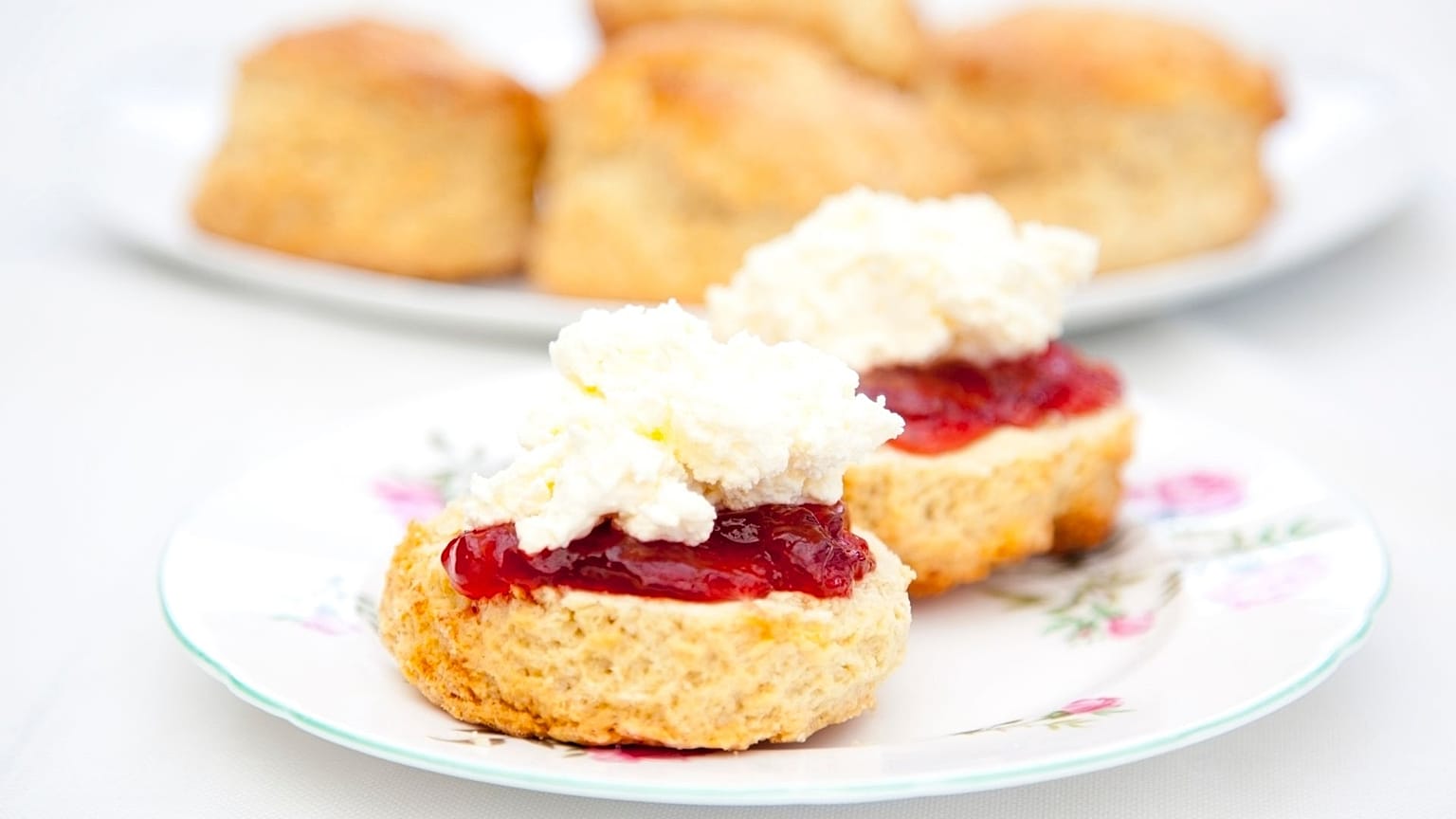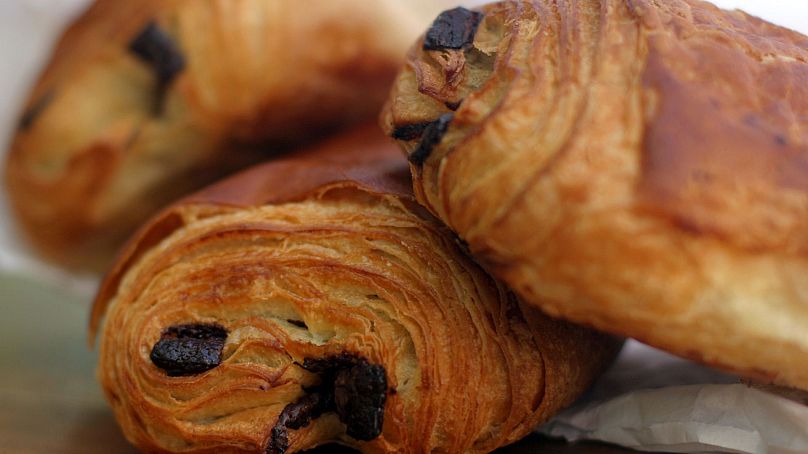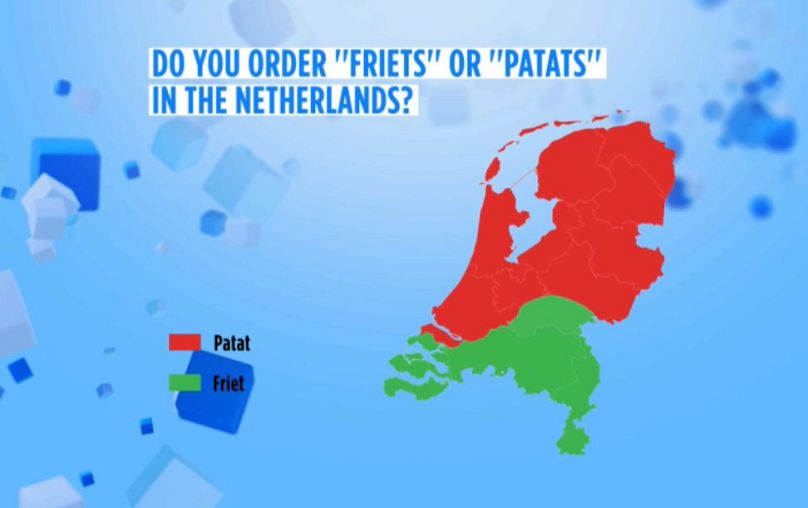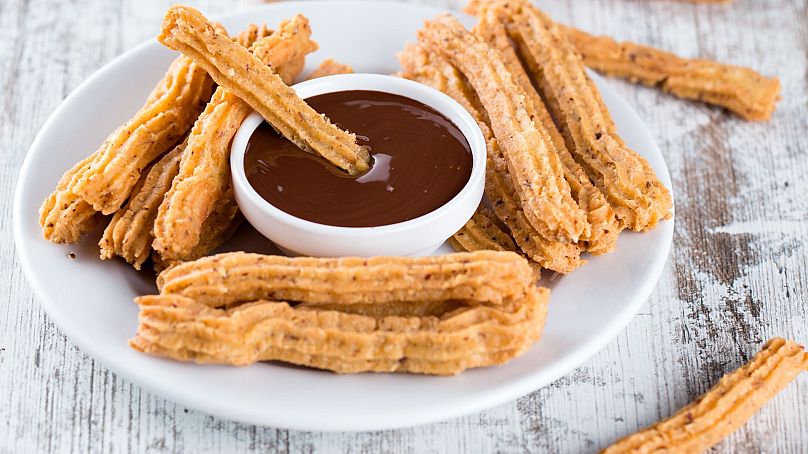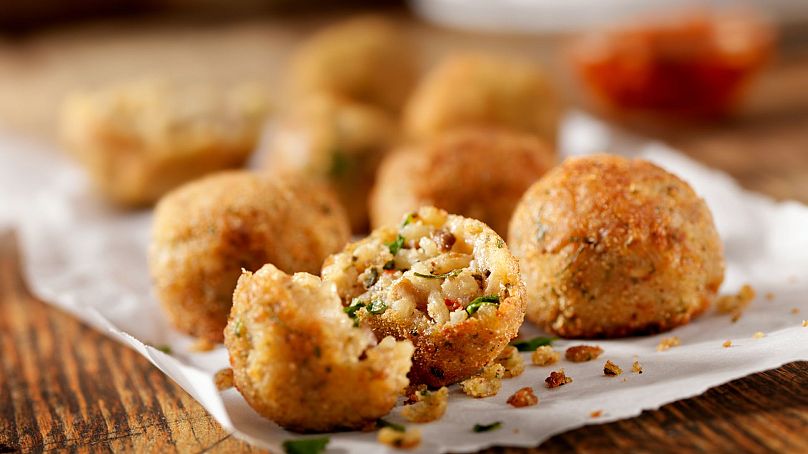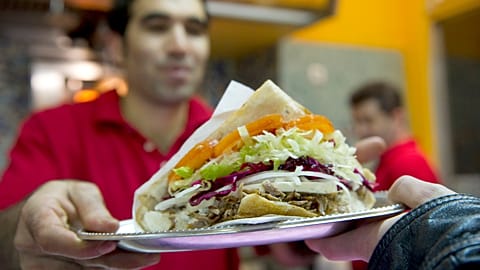Does scone rhyme with "gone" or "bone"? Should you order a "pain au chocolat" or a "chocolatine" in France? Here's a look at some of the most furious yet delicious debates across Europe.
Forget about whether it's better to leave or remain in the EU, whether you should vote Labour or Conservative, or whether the monarchy should be abolished — there's a far more serious, and indeed tasty, debate that's plagued the UK for years.
The question is this: how do you pronounce the word "scone", the iconic British baked good that's a staple of any proper tea time? Does it rhyme with "bone" or "gone"?
A new survey published by global online research company YouGov attempts to shed light on the answer by revealing exactly which parts of Britain pronounce it in which way, and by how big a majority.
It turns out people in Scotland and northern England are far more likely to rhyme scone with "gone", while parts of southern England tend to rhyme scone with "bone", according to YouGov.
Specifically, people in Durham are the most likely to pronounce it like "gone" (89%) while people in Derbyshire (79%) are the most likely to rhyme it with "bone".
If that wasn't enough, in another raging scone-related debate, YouGov also found that Brits across the country seem to prefer the "Cornish method" of eating them (i.e. putting jam on first and then adding cream) over the "Devon method" (where cream goes on first). It's worth noting that Queen Elizabeth II reportedly preferred the Devon method...
Yes, the debate might seem a tad overdone, but it's not only the Brits who are at it: there are plenty of other culinary linguistic arguments across Europe, and they're all just as serious.
'Pain au chocolat' or 'chocolatine'?
Should you order a "pain au chocolat" or a "chocolatine" in a French bakery? Well, the age-old question in France has been answered by science.
Mathieu Avanzi, professeur of linguistics at the University of Neuchâtel, mapped the use of both terms in his book "Comme on dit chez nous - Le grand livre du français de nos régions", published in 2023.
"In the 19th century, different kinds of viennoiseries made of bread dough or puff pastry were sold," he explained. "In Paris, they were called 'petits pains' [little breads]. Some were stuffed with chocolate. The 'petit pain' rapidly became 'pain au chocolat' in the capital city but other regions didn't follow."
That will make hard reading for those from the southwest of France. While most of the country sticks to "pain au chocolat", people from the likes of Bordeaux and Toulouse are more likely to say "chocolatine".
The north and northeast of France diverge with "petit pain au chocolat" and "croissant au chocolat" respectively, while neighbouring Belgium throws a curve ball with "couque au chocolat".
The debate has made a lot of noise on social media. In 2016, when France renamed its regions, some internet users suggested renaming the southwestern Occitania region to "Chocolatinie".
A year later, a group of high school students wrote to the French president asking him to make sure the word "chocolatine" was included in every dictionary.
'Friet' vs 'patat'
In the Netherlands, there's a sizzling debate on what you call chips (or fries, to use the American term). While the word "friet" is more common in the south, the word "patat" is preferred in the north. According to Mark Oostendorper of the Meertens Institute, both words have the same meaning.
Etymologically speaking, the word "patat" comes from the Spanish word "patata" (potato) and refers to the food itself. In the sixteenth century, Spanish explorers in South America came across the sweet potato — which they called "batata" — and the white potato — which they called "papa" — from the Quechua language. The two words later merged into one: "patata".
Instead, the word "friet" refers to the way you cook chips and is related to the word "frying".
"The cultural 'fight' has to do with the regional spread of the two words," according to Jan Stroop, linguist and researcher at the University of Amsterdam. "This more or less coincides with the cultural differences between the two areas."
"The word friet is gaining ground and is becoming more and more common. It seems that some people don’t like that," he added.
Stroop assured though that the rivalry between the "patat" and "friet" camps is not taken too seriously: "The debate is always full of humour."
What do you call a churro?
Who doesn't like churros, the irresistible spaghetti-shaped fried dough treats from Spain?
While some might be torn between dipping them in hot chocolate or pouring sugar on top, there's a deeper debate on what they're actually called.
While "churro" is a generic term used all across Spain, parts of Andalucía call them "tejeringos" or "jeringos", while others use the word "porras".
But there's a slight difference here compared to the other European examples we've looked at: even though they're often commonly sold as churros, porras are actually longer and thicker than their "fraternal twin".
"The base at the end is the same: water, flour and salt," said Daniel Real, master churrero at the San Ginés churrería in Madrid, adding that porras are made with finer flour and a bit of baking soda.
Another key difference is the temperature of the oil that they're cooked in: "For churros, it's between 200 and 205 degrees Celsius approximately. For the porras, it's about 230 degrees," he said.
As for the name debate though, Rael said that each region will ultimately fight for its own term regardless of how they're made.
The Sicilian gender debate
In Sicily, a gender debate of a much less toxic and far more delicious kind has been going on for decades.
While there's no question about how delicious these Italian deep-fried stuffed rice balls are, there is indeed controversy over whether they should be called "arancini" or "arancine" — essentially, whether they're masculine or feminine.
In the west, in Palermo, people prefer the feminine singular word "arancina" ("arancine" in the plural form) while in Catania in the east, people use the masculine singular word "arancino" ("arancini" in the plural) when referring to the savoury snack.
According to Sicilian culture expert Gaetano Basile, the recipe originates from an Arab custom to fry rice leftovers and roll them into a ball with spices, meat and vegetables.
"In old Sicilian, the dish 'arànciu', a masculine word, looked like a bitter orange. In 1480, Portuguese boats arrived in Palermo and brought new sweet oranges called 'laranja'," he explained.
According to Basile, people on the western side of the island then changed the name from the masculine Italianised "arancinu" to the feminine "arancina" to keep the connection with its citrusy roots. Yet this change never occurred on the eastern side of the island.
In recent years, the furiousness of the debate has been fanned even further by some social media users, who have boycotted restaurants and even launched death threats against public figures for using one term or the other.
As a result, some have introduced gender-neutral words, including "arancin*" and "arancin@", in an attempt to smooth things over.















